 W
WIn the Ancient Near East, clay tablets were used as a writing medium, especially for writing in cuneiform, throughout the Bronze Age and well into the Iron Age.
 W
WThe incipit of a text is the first few words of the text, employed as an identifying label. In a musical composition, an incipit is an initial sequence of notes, having the same purpose. The word incipit comes from Latin and means "it begins". Its counterpart taken from the ending of the text is the explicit.
 W
WIn publishing, a colophon is a brief statement containing information about the publication of a book such as the place of publication, the publisher, and the date of publication. A colophon may include the device of a printer or publisher. Colophons are correctly printed at the ends of books, but sometimes the same information appears elsewhere and many modern (post-1800) books bear this information on the verso of the title-leaf, which is sometimes called a "biblio-page" or the "copyright-page".
 W
WThe Agušaya Hymn or Song of Agušaya is an Old Babylonian literary work, a “song of praise”, written in the Akkadian language concerning the goddess Ištar, identified with the serpent deity Irnina. It may have been called “the Snake has Turned” in antiquity, as it has ú-ta-ar MUŠ inscribed at the top edge at the beginning. It is extant on two unprovenanced tablets, designated A and B, the latter of which includes a request for eternal life for king Ḫammu-rāpī, on the fifth column, 26th line, for whom it is thought to have been composed as an epic hymn of celebration of “the mad dancer in battle”. It is arranged into ten kirugú-stanzas and six ĝešgiĝal-antiphons as lyrical retorts, the numbering of which suggest that the work extends over the two tablets, although the second may not be the actual sequel of the first as the first is an eight column tablet while the second only has six columns and there are apparently subtle differences in late Old Babylonian cursive cuneiform distinguishing them, suggesting tablet A is the younger copy.
 W
WThe Babylonian astronomical diaries are a collection of Babylonian cuneiform texts that contain systematic records of astronomical observations and political events as well as predictions, based on astronomical observations. They also include other information such as commodity prices for particular dates and weather reports.
 W
WThe Babylonian Chronicles are a series of tablets recording major events in Babylonian history. They are thus one of the first steps in the development of ancient historiography. The Babylonian Chronicles were written from the reign of Nabonassar up to the Parthian Period, by Babylonian astronomers ("Chaldaeans"), who probably used the Astronomical Diaries as their source.
 W
WThe Babylonian Map of the World is a Babylonian clay tablet containing a labeled depiction of the known world, with a short and partially lost description, dated to roughly the 6th century BC.
 W
WThe Barton Cylinder is a Sumerian creation myth, written on a clay cylinder in the mid to late 3rd millennium BCE, which is now in the University of Pennsylvania Museum of Archaeology and Anthropology. Joan Goodnick Westenholz suggests it dates to around 2400 BC.
 W
WBasileus is a Greek term and title that has signified various types of monarchs in history. In the English-speaking world it is perhaps most widely understood to mean "king" or "emperor". The title was used by sovereigns and other persons of authority in ancient Greece, the Byzantine emperors, and the kings of modern Greece.
 W
WThe Bogazkoy archives are a collection of texts found on the site of the capital of the Hittite state, the city of Hattusas. They are the oldest extant documents of the state, and they are believed to have been created in the 2nd millennium. The archive contains approximately 25,000 tablets.
 W
WThe building known as the Bureau of Correspondence of Pharaoh is located in the 'Central City' area of the ancient Egyptian city of Amarna, known as Akhetaten in ancient times. The city was the short-lived capital during the reign of the pharaoh Akhenaten during ancient Egypt's 18th Dynasty.
 W
WTappeh-ye Choghā Mīsh dating back to 6800 BC, is the site of a Chalcolithic settlement in Western Iran, located in the Khuzistan Province on the Susiana Plain. It was occupied at the beginning of 6800 BC and continuously from the Neolithic up to the Proto-Literate period, thus spanning the time periods from Archaic through Elamite. Later, the nearby Susa became culturally dominant in this area.
 W
WThe Chronicle of Early Kings, Chronicle 20 in Grayson’s Assyrian and Babylonian Chronicles and Mesopotamian Chronicle 40 in Glassner’s Chroniques mésopotamiennes is preserved on two tablets, tablet A is well preserved whereas tablet B is broken and the text fragmentary. Episodic in character, it seems to have been composed from linking together the apodoses of omen literature, excerpts of the Weidner Chronicle and year-names. It begins with events from the late third-millennium reign of Sargon of Akkad and ends, where the tablet is broken away, with that of Agum III, c.a 1500 BC.
 W
WChronicle P, known as Chronicle 22 in Grayson’s Assyrian and Babylonian Chronicles and Mesopotamian Chronicle 45: "Chronicle of the Kassite Kings" in Glassner's Mesopotamian Chronicles is named for T. G. Pinches, the first editor of the text. It is a chronicle of the second half of the second millennium BC or the Kassite period, written by a first millennium BC Babylonian scribe.
 W
WThe complaint tablet to Ea-nasir is a clay tablet from ancient Babylon written c. 1750 BC. It is a complaint to a merchant named Ea-nasir from a customer named Nanni. Written in Akkadian cuneiform, it is considered to be the oldest known written complaint. It is currently kept in the British Museum.
 W
WDanel, father of Aqhat, was a culture hero who appears in an incomplete Ugaritic text of the fourteenth century BCE at Ugarit, Syria, where the name is rendered DN'IL, "El is judge".
 W
WThe "Debate between bird and fish" is a literature essay of the Sumerian language, on clay tablets from the mid to late 3rd millennium BC.
 W
WThe "Debate between sheep and grain" or "Myth of cattle and grain" is a Sumerian creation myth, written on clay tablets in the mid to late 3rd millennium BCE.
 W
WThe Debate between Winter and Summer or Myth of Emesh and Enten is a Sumerian creation myth, written on clay tablets in the mid to late 3rd millennium BC.
 W
WThe Sumerian disputation or Sumerian debate is a topical short story created in the middle-to-late 3rd millennium BC. Seven major debates are known, with specific titles.
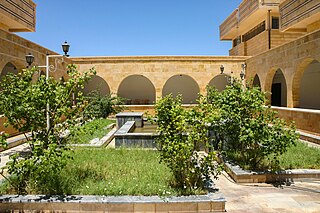 W
WThe Deir ez-Zor Museum is a museum devoted to the archaeology and history of northeastern Syria, an area more commonly known as the Jezirah, or Upper Mesopotamia. The museum is located in Deir ez-Zor, the capital of Deir ez-Zor Governorate, Syria. It was founded in 1974 and housed in a gallery of a shopping mall. Between 1983 and 1996, it was located in an old law court built in 1930. In 1996, the museum moved to its current location in a building that had been especially designed for the museum. The exhibition halls cover an area of 1,600 square metres (17,000 sq ft) and are arranged around a courtyard. The construction of the new museum was a joint Syrian–German operation.
 W
WThe Dialogue between a Man and His God is the earliest known text to address the answer to the question of why a god permits evil, or theodicy, a reflection on human suffering. It is a piece of Wisdom Literature extant on a single clay cuneiform tablet written in Akkadian and attributed to Kalbanum, on the last line, an individual otherwise unknown. It is dated to the latter part of the Old Babylonian period, around about the reign of Ammi-Ditana according to Lambert, and is currently housed in the Louvre Museum, accession number AO 4462. It is of unknown provenance as it was purchased from an antiquities dealer by the Museum in 1906. It shares much of its style with an earlier Sumerian work, “Man and His God”, a penitential prayer of the UR III period.
 W
WThe Dynastic Chronicle, "Chronicle 18" in Grayson's Assyrian and Babylonian Chronicles or the "Babylonian Royal Chronicle" in Glassner’s Mesopotamian Chronicles, is a fragmentary ancient Mesopotamian text extant in at least four known copies. It is actually a bilingual text written in 6 columns, representing a continuation of the Sumerian king list tradition through to the 8th century BC and is an important source for the reconstruction of the historical narrative for certain periods poorly preserved elsewhere.
 W
WThe Ebla tablets are a collection of as many as 1,800 complete clay tablets, 4,700 fragments, and many thousands of minor chips found in the palace archives of the ancient city of Ebla, Syria. The tablets were discovered by Italian archaeologist Paolo Matthiae and his team in 1974–75 during their excavations at the ancient city at Tell Mardikh. The tablets, which were found in situ on collapsed shelves, retained many of their contemporary clay tags to help reference them. They all date to the period between c. 2500 BC and the destruction of the city c. 2250 BC. Today, the tablets are held in museums in the Syrian cities of Aleppo, Damascus, and Idlib.
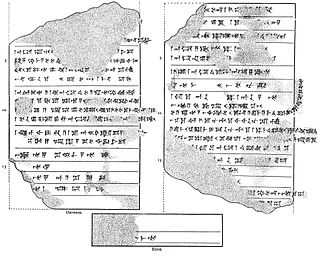 W
WThe Eclectic Chronicle, referred to in earlier literature as the New Babylonian Chronicle, is an ancient Mesopotamian account of the highlights of Babylonian history during the post-Kassite era prior to the 689 BC fall of the city of Babylon. It is an important source of historiography from the period of the early iron-age dark-age with few extant sources to support its telling of events.
 W
WThe Egyptian–Hittite peace treaty, also known as the Eternal Treaty or the Silver Treaty, is the only Ancient Near Eastern treaty for which the versions of both sides have survived. It is also the earliest known surviving peace treaty and is sometimes called the Treaty of Kadesh after the well-documented Battle of Kadesh that had been fought some 16 years earlier although Kadesh is not mentioned in the text. Both sides of the treaty have been the subject of intensive scholarly study. The treaty itself did not bring about a peace; in fact, "an atmosphere of enmity between Hatti and Egypt lasted many years" until the eventual treaty of alliance was signed.
 W
WEnlil and Ninlil or the Myth of Enlil and Ninlil or Enlil and Ninlil: The begetting of Nanna is a Sumerian creation myth, written on clay tablets in the mid to late 3rd millennium BC.
 W
WGlozel is a hamlet in central France, part of the commune of Ferrières-sur-Sichon, Le Mayet-de-Montagne, Allier, some 17 km from Vichy.
 W
WThe Gudea cylinders are a pair of terracotta cylinders dating to circa 2125 BC, on which is written in cuneiform a Sumerian myth called the Building of Ningirsu's temple. The cylinders were made by Gudea, the ruler of Lagash, and were found in 1877 during excavations at Telloh, Iraq and are now displayed in the Louvre in Paris, France. They are the largest cuneiform cylinders yet discovered and contain the longest known text written in the Sumerian language.
 W
WThe Hurrian songs are a collection of music inscribed in cuneiform on clay tablets excavated from the ancient Amorite-Canaanite city of Ugarit, a headland in northern Syria, which date to approximately 1400 BCE. One of these tablets, which is nearly complete, contains the Hurrian Hymn to Nikkal, making it the oldest surviving substantially complete work of notated music in the world. While the composers' names of some of the fragmentary pieces are known, h.6 is an anonymous work.
 W
WThe Hymn to Enlil, Enlil and the Ekur , Hymn to the Ekur, Hymn and incantation to Enlil, Hymn to Enlil the all beneficent or Excerpt from an exorcism is a Sumerian myth, written on clay tablets in the late third millennium BC.
 W
WIM 67118, also known as Db2-146, is an Old Babylonian clay tablet in the collection of the National Museum of Iraq that contains the solution to a problem in plane geometry concerning a rectangle with given area and diagonal. In the last part of the text the solution is proved correct by means of the Pythagorean theorem. The steps of the solution are believed to represent cut-and-paste geometry operations involving a diagram from which, it has been suggested, ancient Mesopotamians might, at an earlier time, have derived the Pythagorean theorem.
 W
WJehoiachin's rations tablets date from the 6th century BC and describe the rations set aside for a royal captive identified with Jeconiah, king of Judah. Tablets from the royal archives of Nebuchadnezzar king of Babylon were unearthed in the ruins of Babylon that contain food rations paid to captives and craftsmen who lived in and around the city. On one of the tablets, "Ya’u-kīnu, king of the land of Yahudu" is mentioned along with his five sons listed as royal princes.
 W
WJemdet Nasr is a tell or settlement mound in Babil Governorate (Iraq) that is best known as the eponymous type site for the Jemdet Nasr period, and was one of the oldest Sumerian cities. The site was first excavated in 1926 by Stephen Langdon, who found proto-cuneiform clay tablets in a large mudbrick building thought to be the ancient administrative centre of the site. A second season took place in 1928, but this season was very poorly recorded. Subsequent excavations in the 1980s under British archaeologist Roger Matthews were, among other things, undertaken to relocate the building excavated by Langdon. These excavations have shown that the site was also occupied during the Ubaid, Uruk and Early Dynastic I periods.
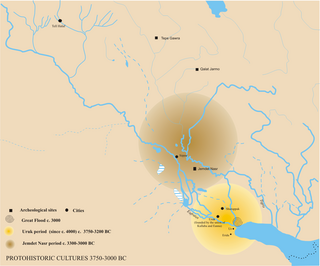 W
WThe Jemdet Nasr Period is an archaeological culture in southern Mesopotamia. It is generally dated from 3100–2900 BC. It is named after the type site Tell Jemdet Nasr, where the assemblage typical for this period was first recognized. Its geographical distribution is limited to south-central Iraq. The culture of the proto-historical Jemdet Nasr period is a local development out of the preceding Uruk period and continues into the Early Dynastic I period.
 W
WThe Kesh Temple Hymn or Liturgy to Nintud or Liturgy to Nintud on the creation of man and woman is a Sumerian tablet, written on clay tablets as early as 2600 BCE. Along with the Instructions of Shuruppak, it is the oldest surviving literature in the world.
 W
WThe lament for Sumer and Urim or the lament for Sumer and Ur is a poem and one of five known Mesopotamian "city laments"—dirges for ruined cities in the voice of the city's tutelary goddess.
 W
WThe Lament for Ur, or Lamentation over the city of Ur is a Sumerian lament composed around the time of the fall of Ur to the Elamites and the end of the city's third dynasty.
 W
WThe cuneiform lexical lists are a series of ancient Mesopotamian glossaries which preserve the semantics of Sumerograms, their phonetic value and their Akkadian or other language equivalents. They are the oldest literary texts from Mesopotamia and one of the most widespread genres in the ancient Near East. Wherever cuneiform tablets have been uncovered, inside Iraq or in the wider Middle East, these lists have been discovered.
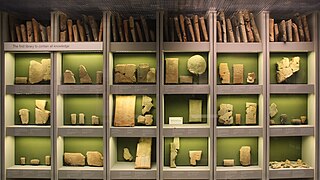 W
WThe Royal Library of Ashurbanipal, named after Ashurbanipal, the last great king of the Assyrian Empire, is a collection of thousands of clay tablets and fragments containing texts of all kinds from the 7th century BC. Among its holdings was the famous Epic of Gilgamesh.
 W
WLinear B is a syllabic script that was used for writing Mycenaean Greek, the earliest attested form of Greek. The script predates the Greek alphabet by several centuries. The oldest Mycenaean writing dates to about 1450 BC. It is descended from the older Linear A, an undeciphered earlier script used for writing the Minoan language, as is the later Cypriot syllabary, which also recorded Greek. Linear B, found mainly in the palace archives at Knossos, Cydonia, Pylos, Thebes and Mycenae, disappeared with the fall of Mycenaean civilization during the Late Bronze Age collapse. The succeeding period, known as the Greek Dark Ages, provides no evidence of the use of writing. It is also the only one of the Bronze Age Aegean scripts to have been deciphered, by English architect and self-taught linguist Michael Ventris.
 W
WThe Nabonidus Chronicle is an ancient Babylonian text, part of a larger series of Babylonian Chronicles inscribed in cuneiform script on clay tablets. It deals primarily with the reign of Nabonidus, the last king of the Neo-Babylonian Empire, covers the conquest of Babylon by the Persian king Cyrus the Great, and ends with the start of the reign of Cyrus's son Cambyses, spanning a period from 556 BC to some time after 539 BC. It provides a rare contemporary account of Cyrus's rise to power and is the main source of information on this period; Amélie Kuhrt describes it as "the most reliable and sober [ancient] account of the fall of Babylon."
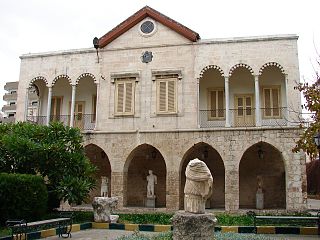 W
WThe National Museum of Latakia, also known as the Latakia Museum, is a museum located in the coastal city of Latakia, Syria, near the city's seafront, facing the Port of Latakia. It was inaugurated in 1986.
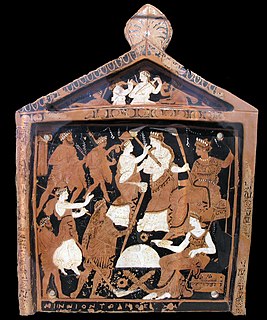 W
WThe Ninnion Tablet, dated to approximately 370 BC, is a red clay tablet depicting the ancient Greek Eleusinian Mysteries. It was rediscovered in Eleusis, Attica in 1895, and is kept in the National Archaeological Museum of Athens.
 W
WOld Babylonian oracle is a Sumerian myth, written on clay tablets dated to between 2340 and 2200 BC.
 W
WThe Palace of Nestor was an important centre in Mycenaean times, and described in Homer's Odyssey and Iliad as Nestor's kingdom of "sandy Pylos".
 W
WThe Persepolis Fortification Archive and Persepolis Treasury Archive are two groups of clay administrative archives — sets of records physically stored together – found in Persepolis dating to the Achaemenid Persian Empire. The discovery was made during legal excavations conducted by the archaeologists from the Oriental Institute of the University of Chicago in the 1930s. Hence they are named for their in situ findspot: Persepolis. The archaeological excavations at Persepolis for the Oriental Institute were initially directed by Ernst Herzfeld from 1931 to 1934 and carried on from 1934 until 1939 by Erich Schmidt.
 W
WPlimpton 322 is a Babylonian clay tablet, notable as containing an example of Babylonian mathematics. It has number 322 in the G.A. Plimpton Collection at Columbia University. This tablet, believed to have been written about 1800 BC, has a table of four columns and 15 rows of numbers in the cuneiform script of the period.
 W
WThe Religious Chronicle is an ancient Mesopotamian register of portents such as the straying of wild animals into urban areas and extraordinary natural phenomena which presaged the disruptions which interfered with the Akītu or new year festival and the performance of its regular cultic activities which included the transport of the idols of the gods to the city of Babylon during the tumultuous years of chaos caused by the incursions of Aramean nomads.
 W
WA scribe is a person who serves as a professional copyist, especially one who made copies of manuscripts before the invention of automatic printing.
 W
WSelf-praise of Shulgi is a Sumerian myth, written on clay tablets dated to between 2100 and 2000 BC.
 W
WThe Song of the hoe or the Creation of the pickax is a Sumerian creation myth, written on clay tablets from the last century of the 3rd millennium BCE.
 W
WSumerian Farmer's Almanac is the first farmer's almanac on record. The farmer's almanac is dated to around 1700 to 1500 BC. It was discovered in 1949 by an American expedition in Iraq sponsored jointly by the Oriental Institute of the University of Chicago and the University Museum of the University of Pennsylvania.
 W
WThe Tabula Capuana, is an ancient terracotta slab, 60 by 50 centimeters, with a long inscribed text in Etruscan, apparently a ritual calendar, of which about 390 words are legible. It is located in the Altes Museum, Berlin. It is the second-most extensive surviving Etruscan text.
 W
WThe Tărtăria tablets /tərtəria/ are three tablets, reportedly discovered in 1961 at a Neolithic site in the village of Tărtăria, in Romania.
 W
WThe Venus tablet of Ammisaduqa is the record of astronomical observations of Venus, as preserved in numerous cuneiform tablets dating from the first millennium BC. It is believed that this astronomical record was first compiled during the reign of King Ammisaduqa, the fourth ruler after Hammurabi. Thus, the origins of this text should probably be dated to around the mid-seventeenth century BC..
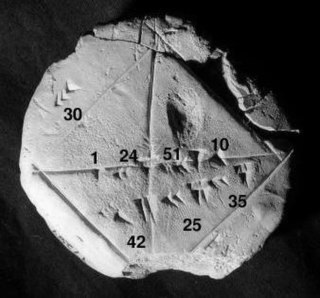 W
WComprising some 45,000 items, the Yale Babylonian Collection is an independent branch of the Yale University Library housed on the Yale University campus in Sterling Memorial Library at New Haven, Connecticut, United States.
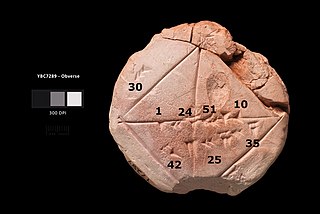 W
WYBC 7289 is a Babylonian clay tablet notable for containing an accurate sexagesimal approximation to the square root of 2, the length of the diagonal of a unit square. This number is given to the equivalent of six decimal digits, "the greatest known computational accuracy ... in the ancient world". The tablet is believed to be the work of a student in southern Mesopotamia from some time in the range from 1800–1600 BC, and was donated to the Yale Babylonian Collection by J. P. Morgan.